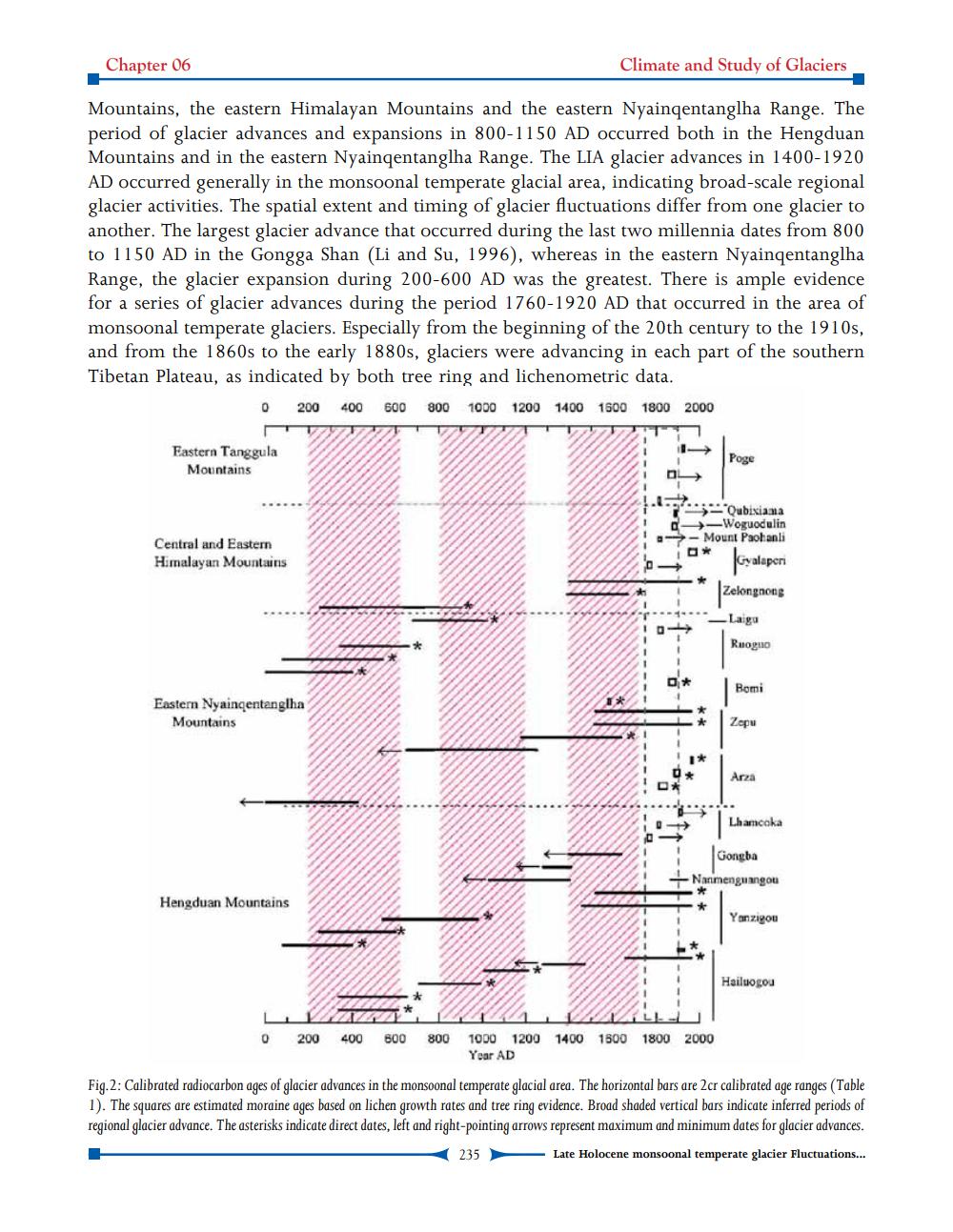________________
Chapter 06
Climate and Study of Glaciers
Mountains, the eastern Himalayan Mountains and the eastern Nyainqentanglha Range. The period of glacier advances and expansions in 800-1150 AD occurred both in the Hengduan Mountains and in the eastern Nyainqentanglha Range. The LIA glacier advances in 1400-1920 AD occurred generally in the monsoonal temperate glacial area, indicating broad-scale regional glacier activities. The spatial extent and timing of glacier fluctuations differ from one glacier to another. The largest glacier advance that occurred during the last two millennia dates from 800 to 1150 AD in the Gongga Shan (Li and Su, 1996), whereas in the eastern Nyainqentanglha Range, the glacier expansion during 200-600 AD was the greatest. There is ample evidence for a series of glacier advances during the period 1760-1920 AD that occurred in the area of monsoonal temperate glaciers. Especially from the beginning of the 20th century to the 1910s, and from the 1860s to the early 1880s, glaciers were advancing in each part of the southern Tibetan Plateau, as indicated by both tree ring and lichenometric data.
0 200 400 600 800 1000 1200 1400 1500 1800 2000
Eastern Tanggula
Mountains
Poge
04
-Qubixiama
-Woguodulin - Mount Paohanli
Gyalaperi
Central and Eastem Himalayan Mountains
BIL
Zelongnong
Lagu
Ruogo
Bomi
Eastern Nyainqentanglha
Mountains
*
Zapu
Arza
Lhamcoka
Gongba Nanmenguangou
Hengduan Mountains
Yanzigou
Hailuogou
0
200
400
600
800
1400
1500
1800
2000
1000 1200 Year AD
Fig.2: Calibrated radiocarbon ages of glacier advances in the monsoonal temperate glacial area. The horizontal bars are 2cr calibrated age ranges (Table 1). The squares are estimated moraine ages based on lichen growth rates and tree ring evidence. Broad shaded vertical bars indicate inferred periods of regional glacier advance. The asterisks indicate direct dates, left and right-pointing arrows represent maximum and minimum dates for glacier advances.
235
Late Holocene monsoonal temperate glacier Fluctuations...




